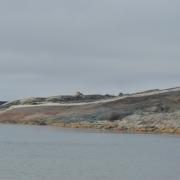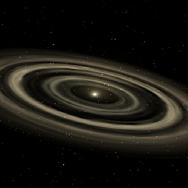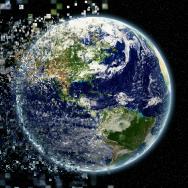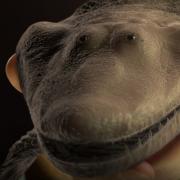The origin of life on Earth stands as one of the great mysteries of science. Various answers have been proposed, all of which remain unverified. To find out if we are alone in the galaxy, we will need to better understand what geochemical conditions nurtured the first life forms. What water, chemistry and temperature cycles fostered the chemical reactions that allowed life to emerge on our planet? Because life arose in the largely unknown surface conditions of Earth’s early history, answering these and other questions remains a challenge.
Several seminal experiments in this topic have been conducted at the University of Chicago, including the Miller-Urey experiment that suggested how the building blocks of life could form in a primordial soup.
Jump to a section:
- When did life on Earth begin?
- Where did life on Earth begin?
- What are the ingredients of life on Earth?
- What are the major scientific theories for how life emerged?
- What is chirality and why is it biologically important?
- What research are UChicago scientists currently conducting on the origins of life?
When did life on Earth begin?
Earth is about 4.5 billion years old. Scientists think that by 4.3 billion years ago, Earth may have developed conditions suitable to support life. The oldest known fossils, however, are only 3.7 billion years old. During that 600 million-year window, it's possible that life may have emerged repeatedly, only to be snuffed out by catastrophic collisions with asteroids and comets.
The details of those early events are not well preserved in Earth’s oldest rocks. Some hints come from the oldest zircons, highly durable minerals that formed in magma. Scientists have found traces of a form of carbon—an important element in living organisms—in one such 4.1 billion-year-old zircon. However, it does not provide enough evidence to prove life’s existence at that early date.
Where did life on Earth begin?
The early days on Earth looked very different from today—it was extremely hot, volcanically active, and bathed in brutal ultraviolet radiation. Since we don’t have fossils from this time, scientists can look at life forms that still exist today in similar conditions. From these, they have suggested possibilities where life first began.
Some microorganisms thrive in the scalding, highly acidic hot springs environments like those found today in Iceland, Norway and Yellowstone National Park. The same goes for deep-sea hydrothermal vents. These chimney-like vents form where seawater comes into contact with magma on the ocean floor, resulting in streams of superheated plumes. The microorganisms that live near such plumes have led some scientists to suggest them as the birthplaces of Earth’s first life forms.
Organic molecules may also have formed in certain types of clay minerals that could have offered favorable conditions for protection and preservation. This could have happened on Earth during its early history, or on comets and asteroids that later brought them to Earth in collisions. (If the latter is true, this would suggest that the same process could have seeded life on planets elsewhere in the universe.)
What are the ingredients of life on Earth?
The recipe consists of a steady energy source, organic compounds and water.
Sunlight provides the energy source at the surface, which drives photosynthesis. On the ocean floor, geothermal energy supplies the chemical nutrients that organisms need to live.
Also crucial are the elements important to life. For us, these are carbon, hydrogen, oxygen, nitrogen, and phosphorus. But there are several scientific mysteries about how these elements wound up together on Earth. For example, scientists would not expect a planet that formed so close to the sun to naturally incorporate carbon and nitrogen. These elements become solid only under very cold temperatures, such as exist in the outer solar system, not nearer to the sun where Earth is. Also, carbon, like gold, is rare at the Earth’s surface. That’s because carbon chemically bonds more often with iron than rock. Gold also bonds more often with metal, so most of it ends up in the Earth’s core. So, how did the small amounts found at the surface get there? Could a similar process also have unfolded on other planets?
The last ingredient is water. Water now covers about 70% of Earth’s surface, but how much sat on the surface 4 billion years ago? Like carbon and nitrogen, water is much more likely to become a part of solid objects that formed at a greater distance from the sun. To explain its presence on Earth, one theory proposes that a class of meteorites called carbonaceous chondrites formed far enough from the sun to have served as a water-delivery system.
What are the major scientific theories for how life emerged?
There are several theories for how life came to be on Earth. These include:
-
Life emerged from a primordial soup. As a University of Chicago graduate student in 1952, Stanley Miller performed a famous experiment with Harold Urey, a Nobel laureate in chemistry. Their results explored the idea that life formed in a primordial soup.
Miller and Urey injected ammonia, methane and water vapor into an enclosed glass container to simulate what were then believed to be the conditions of Earth’s early atmosphere. Then they passed electrical sparks through the container to simulate lightning. Amino acids, the building blocks of proteins, soon formed. Miller and Urey realized that this process could have paved the way for the molecules needed to produce life.
Scientists now believe that Earth’s early atmosphere had a different chemical makeup from Miller and Urey’s recipe. Even so, the experiment gave rise to a new scientific field called prebiotic or abiotic chemistry, the chemistry that preceded the origin of life. This is the opposite of biogenesis, the idea that only a living organism can beget another living organism.
-
Life was seeded by comets or meteors. Some scientists think that some of the molecules important to life may be produced outside the Earth. Instead, they suggest that these ingredients came from meteorites or comets.
“A colleague once told me, ‘It’s a lot easier to build a house out of Legos when they’re falling from the sky,’” said Fred Ciesla, a geophysical sciences professor at UChicago. Ciesla and that colleague, Scott Sandford of the NASA Ames Research Center, published research showing that complex organic compounds were readily produced under conditions that likely prevailed in the early solar system when many meteorites formed.
Meteorites then might have served as the cosmic Mayflowers that transported molecular seeds to Earth. In 1969, the Murchison meteorite that fell in Australia contained dozens of different amino acids—the building blocks of life.
Comets may also have offered a ride to Earth-bound hitchhiking molecules, according to experimental results published in 2001 by a team of researchers from Argonne National Laboratory, the University of California Berkeley, and Lawrence Berkeley National Laboratory. By showing that amino acids could survive a fiery comet collision with Earth, the team bolstered the idea that life’s raw materials came from space.
In 2019, a team of researchers in France and Italy reported finding extraterrestrial organic material preserved in the 3.3 billion-year-old sediments of Barberton, South Africa. The team suggested micrometeorites as the material’s likely source. Further such evidence came in 2022 from samples of asteroid Ryugu returned to Earth by Japan’s Hayabusa2 mission. The count of amino acids found in the Ryugu samples now exceeds 20 different types.
What is chirality and why is it biologically important?
In 1953, UChicago researchers published a landmark paper in the Journal of Biological Chemistry that marked the discovery of the pro-chirality concept, which pervades modern chemistry and biology. The paper described an experiment showing that the chirality of molecules—or “handedness,” much the way the right and left hands differ from one another—drives all life processes. Without chirality, large biological molecules such as proteins would be unable to form structures that could be reproduced.
What research are UChicago scientists currently conducting on the origins of life?
Today, research on the origin of life at UChicago is expanding. As scientists have been able to find more and more exoplanets—that is, planets around stars elsewhere in the galaxy—the question of what the essential ingredients for life are and how to look for signs of them has heated up.
Nobel laureate Jack Szostak leads the interdisciplinary Origins of Life Initiative to coordinate research efforts into the origin of life on Earth, which includes specialists in chemistry, astronomy, geology and geophysics.
“Right now we are getting truly unprecedented amounts of data coming in: Missions like Hayabusa and OSIRIS-REx are bringing us pieces of asteroids, which helps us understand the conditions that form planets, and NASA’s new JWST telescope is taking astounding data on the solar system and the planets around us,” said Prof. Ciesla. “I think we’re going to make huge progress on this question.”
Last reviewed November 2025.








